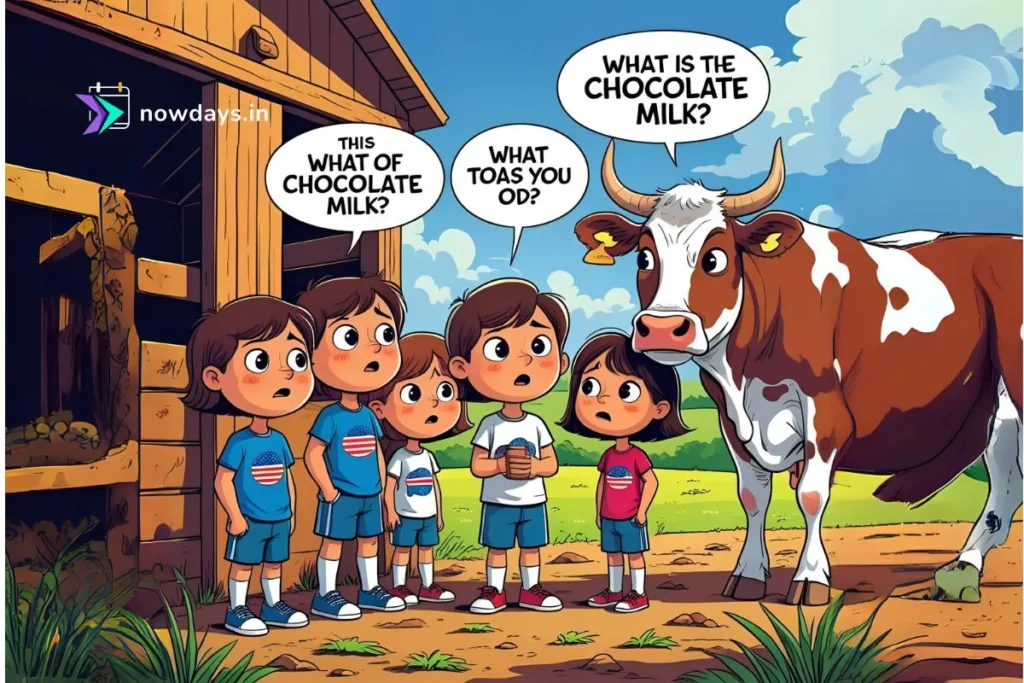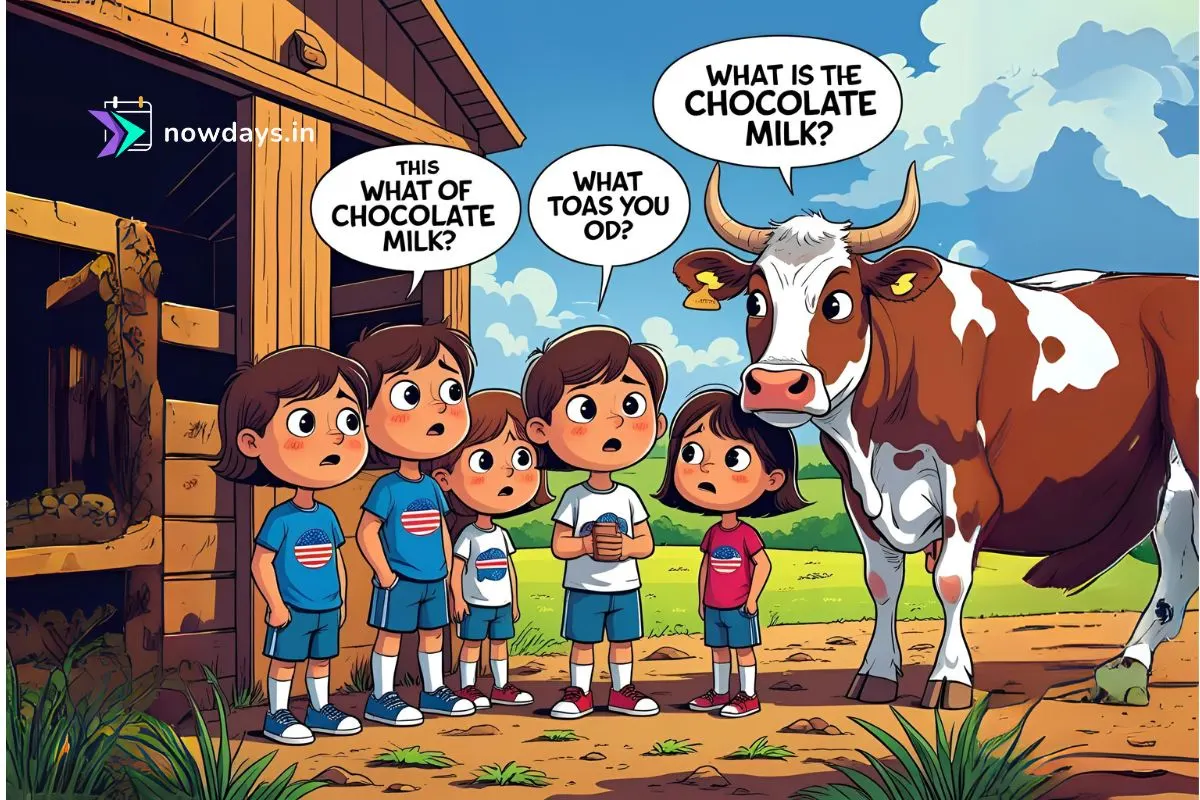That headline might sound like satire, but it’s a genuine finding that reveals a surprising gap in basic agricultural knowledge. A recent survey illuminated a startling reality: approximately 7% of American adults believe that chocolate milk is produced directly by brown cows. While this statistic might elicit chuckles, it underscores a deeper, more concerning issue about the disconnect between consumers and the origins of their food.
This isn’t just a quirky anecdote; it’s a symptom of a larger challenge in food literacy. Understanding where our food comes from is fundamental to making informed choices about nutrition, sustainability, and supporting the agricultural systems that feed us. Let’s delve into why this misconception exists, what it signifies, and why bridging this knowledge gap matters.
The “Brown Cow” Fallacy: More Than Just a Funny Mistake

The notion that brown cows yield chocolate milk is, of course, biologically incorrect. Chocolate milk, like its plain counterpart, starts with milk from dairy cows (of any color!). Sugar, cocoa, and other flavorings are then added during processing. So, where does this belief come from?
Read more: SuperShe Island: A Women-Only Retreat Empowering Women Worldwide
- The Power of Literal Association: For young children making their first connections between the world and language, linking a brown beverage to brown animals can be a simple, albeit flawed, leap in logic. The survey suggests this childhood misconception persists into adulthood for a significant minority.
- Declining Agricultural Exposure: As the population becomes increasingly urbanized, fewer people have direct experience with farms or livestock. Generations ago, many more families had ties to agriculture. Today, encountering a dairy cow is a novelty for vast swathes of the population.
- Marketing & Packaging Disconnect: Cartons often feature idyllic farm scenes or cartoon cows, but rarely show the industrial processing (pasteurization, mixing, packaging) that transforms raw milk into the chocolate milk on shelves. This creates an incomplete picture of the journey from farm to fridge.
- Education Gaps: Basic agricultural concepts, including the source of common foods, may not receive sufficient emphasis in standard school curricula. Food production can become an abstract concept learned passively, if at all.
Why This Statistic is a Bigger Deal Than It Seems
While 7% believing in chocolate-producing cows is the eye-catching figure, the implications extend far beyond dairy humor:
- Nutritional Literacy: Understanding food sources is foundational to understanding nutrition. If the origin of something as basic as flavored milk is misunderstood, it raises questions about comprehension of more complex nutritional information, ingredients, and food labels.
- Informed Consumer Choices: Knowledge empowers choices. Consumers who understand agricultural processes are better equipped to make decisions about organic vs. conventional, animal welfare, environmental impact, and supporting local farms.
- Policy & Agricultural Support: A public disconnected from how food is produced may struggle to grasp the challenges farmers face (climate impacts, market fluctuations, labor issues) or the importance of agricultural research and policy. This can hinder support for sustainable farming practices.
- Broader Food System Misconceptions: This is likely just the tip of the iceberg. If chocolate milk sources are misunderstood, what about other staples? Surveys have shown similar knowledge gaps regarding the origins of foods like pickles (cucumbers), french fries (potatoes), or even basic grains. The “brown cow” belief highlights a potential vulnerability in general food system awareness.
Bridging the Farm-to-Table Knowledge Gap: Moving Forward
Addressing this disconnect requires proactive effort:
- Enhanced Agricultural Education: Integrating practical food and farm education into school curricula, from elementary levels upwards, is crucial. This goes beyond textbooks – think school gardens, farm visits, and cooking classes.
- Transparent Food Marketing: Brands and retailers can play a role by more clearly illustrating the journey of their products. Showing the steps between the cow and the carton demystifies the process.
- Experiential Learning: Supporting programs that connect people with farms – community-supported agriculture (CSA), farmers’ markets with educational components, farm tours, and urban agriculture initiatives – fosters direct understanding.
- Media & Public Awareness: Documentaries, responsible journalism, and engaging social media content can effectively showcase modern farming and food production, making it accessible and relevant.
- Parental & Community Involvement: Conversations about food origins can start at home. Pointing out where ingredients come from during shopping or meal preparation builds foundational knowledge.
Read more: Berlin Startup Offers Whole-Body Cryopreservation for $200K
The Takeaway: Beyond the Laughs
The revelation that 7% of Americans link chocolate milk directly to brown cows is more than just a strange factoid. It serves as a potent, albeit surprising, indicator of a significant disconnect in our understanding of the food system. It highlights a critical need to revitalize food and agricultural literacy across all ages. By fostering a deeper connection between consumers and the origins of their food, we empower individuals to make healthier, more sustainable choices, support farming communities more effectively, and build a more resilient and informed food future for everyone.
The next time you enjoy a glass of chocolate milk, remember the real story – it’s a tale of agriculture, processing, and the fascinating journey our food takes before it reaches us. Let’s make sure that story is known.










2 thoughts on “7% of Americans Think Chocolate Milk Comes from Brown Cows, Survey Finds”